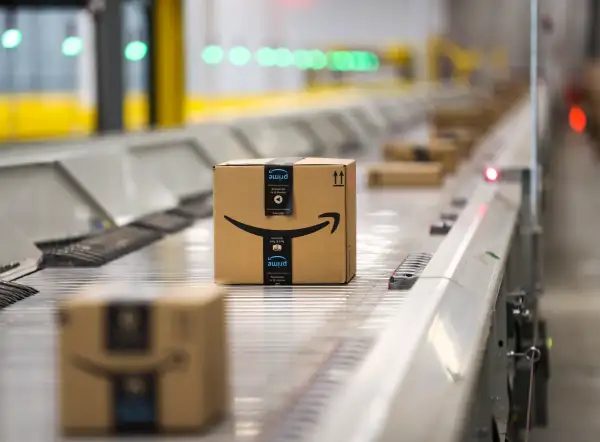This Is the One Company That Amazon Can't Disrupt
Money is not a client of any investment adviser featured on this page. The information provided on this page is for educational purposes only and is not intended as investment advice. Money does not offer advisory services.

Investors know all too well to steer clear of companies that are in Amazon's crosshairs.
In fact, Amazon doesn't even need to actually disrupt a new business to spook the markets. All it takes is a press release that indicates that the online giant is considering moving into a new space — be it healthcare or home improvement or groceries or real estate — and the shares of leading companies in that industry will almost assuredly take a hit. This phenomenon is so common that it has a name: the Amazon Effect.
But if that's the case, should shares of companies that Amazon can't defeat be expected to soar?
That theory hasn't been put to a broad test, as there haven't been that many examples of companies crushing Amazon. However, there is one major industry where Amazon hasn't been able to bully the current leader, as that company — Netflix — has actually been the one doing the real disrupting.
As a result, Netflix shares have been on a tear.
The streaming media giant's stock has doubled in price through the first half of 2018, after growing 390% in the past three years. And recently, analysts at Bank of America raised their "target price" for Netflix stock to $460 a share, meaning they think the stock could rise another 18% above Netflix’s current value.
“We think Netflix can become the dominant streaming player in virtually all markets,” wrote Nat Schindler in his note, according to CNBC, in which he refers to Netflix as “the king” of streaming media.
The implication: The 800-lb. gorilla — Amazon — known for toppling bricks-and-mortar retailers, book stores, and groceries, appears to finally be outmatched.
But how is it that Netflix has been able to do that?
#1: Netflix Is Willing to Outspend Amazon
Conventional wisdom says that Amazon doesn’t do anything for second place. Amazon CEO Jeff Bezos reportedly spent $250 million to secure television rights for the Lord of the Rings franchise, in order to create a series that could cost $100 million to produce a year. It’s an attempt to develop Amazon’s own Game of Thrones.
Clearly, with that type of investment, Amazon wants to provide quality content that will attract eyeballs. And with $178 billion in revenue, it’s not as if Amazon doesn’t have a war chest to tap.
But Netflix’s easily outspends Amazon for content. In 2018, Netflix expects the budget for non-sports programming to reach $8 billion while Amazon’s sits around $5 billion.
#2: Netflix Is Laser-Focused on Content
What all this spending and commitment to the single purpose of delivering quality streaming media has gotten Netflix is similar to what Amazon has earned in shipping: Goodwill from customers.
Netflix has a long-term target of using original programming for half of its content.
Since shows like Stranger Things and Orange is the New Black drive signups, Netflix took steps towards improving its original programming years ago.
Amazon, with the development of Amazon Studios, is trying to catch up, but it has a long ways to go. It has also had a number of missteps in hiring the right talent for Amazon Studios in order to ensure it reaches Netflix-esque quality.
Consumers still side with Netflix. A Morgan Stanley survey found that 39% of viewers said that Netflix has the strongest original programming among subscription video providers. HBO came in second. Amazon Prime Video stood third, with just 5% of consumers siding with the retail giant.
#3: Netflix Understands Its Enemy
When you think about it, Netflix should be leading the way when it comes to streaming video content — at least against Amazon. Netflix’s business plan, after all, is entirely focused on streaming. That’s not the case for Amazon.
Jeff Bezos’s company uses streaming as an add-on to encourage customers to sign up for Prime memberships. The heralded two-day shipping program, the backbone to much of Amazon’s success, squeezes more sales and retention from Prime customers.
Consumer Intelligence Research Partners estimated that Prime members spend $1,300 a year, while non-Prime members spend $700. That $600 difference adds up quickly when you’re talking about 90 million U.S. Prime subscribers.
Amazon’s streaming service is a tool used to attract and retain Prime subscribers, although it isn’t clear how much retention video actually creates. Still it’s not the driving ethos of the company. And Netflix is taking advantage of that fact.
